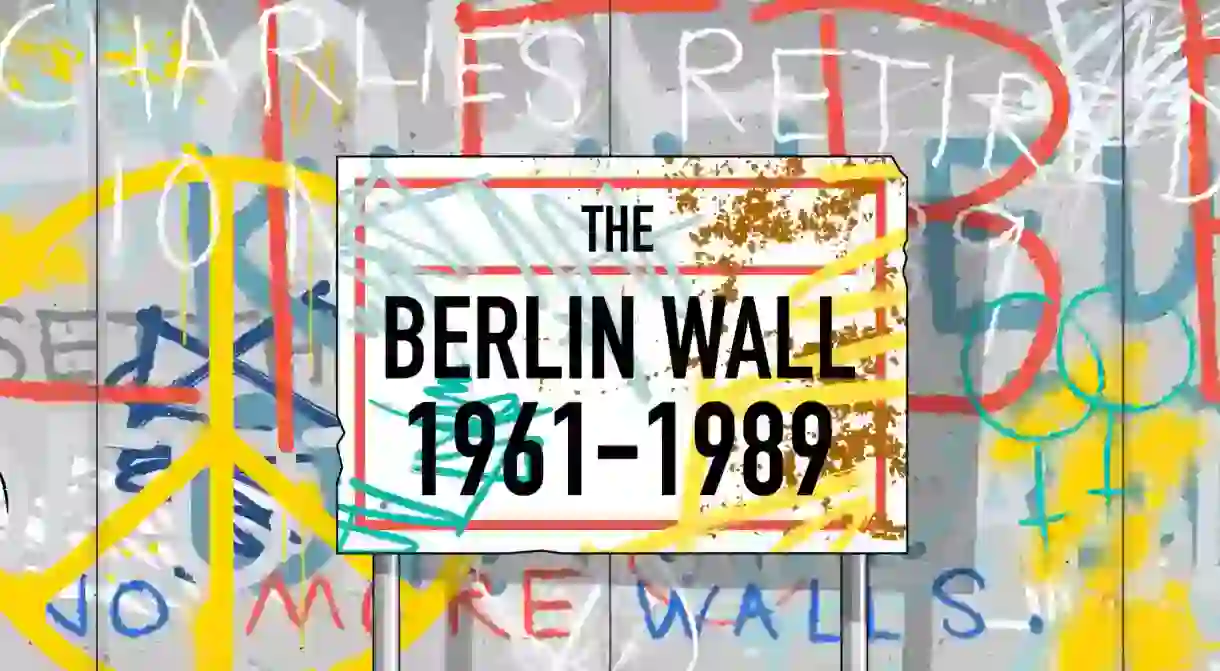Divided City: Understanding the Berlin Wall

The Wall that once divided Berlin has since become one of its most intriguing features, drawing millions of tourists from around the world each year. Discover why the Wall was built in the first place, and how it impacted the lives of Berliners on either side.
The ideological barriers behind the Wall
Following World War II, Berlin was divided into four zones of military occupation: American, French, British (together making up West Berlin) and Soviet (East Berlin), but the city stood within the territory of East Germany. Capitalist West Berlin was aligned politically with the Federal Republic of Germany (West Germany), while East Berlin served as the capital of the socialist German Democratic Republic (East Germany).

With many East Berlin citizens – particularly members of the intelligentsia – hoping to escape the Communist regime, it was decided that drastic measures should be taken to curb the outflow of the GDR‘s best minds. Construction of the Wall began in 1961, separating East Berlin from the western portion of the city, under the guise of protecting civilians from Western fascism. At this time, prominent neighbourhoods like Friedrichshain, Prenzlauer Berg, and most of Mitte were fortified behind the Iron Curtain.
For those considering journeying across the divide, it was not necessarily the 3.6-metre-high (11.8-foot-high) concrete wall that presented the biggest obstacle. Rather, it was the ‘death strip’ that existed in between the East and the West sides, where armed guards, beds of nails and other obstacles kept citizens from climbing over. The mechanisms used to enforce the divide are now displayed at the Berlin Wall Memorial and museum, located near Mauerpark.

Life on either side of the Wall
In West Berlin, the Berlin Wall was often referred to as the ‘Wall of Shame’, and it spurred feelings of rebelliousness and creative expression in many of the city’s youth – particularly in the district of Kreuzberg where vehement countercultural movements emerged. This was evidenced not least by the graffiti covering the western portion of the Wall.

The Free University of Berlin was created in order to fill the void left by Humboldt University, which was quarantined within East Berlin. Kürfurstendamm and the Grunewald Forest remained important hubs for commerce and recreation as they had before WWII. Events like the Berlin Marathon simply omitted the eastern portion of the city from the route. In general, life on the western side pretty much carried on as it did anywhere else in the Western, capitalist world; the Wall, however, stood as a reminder of the fragility of such freedoms and the West’s dependence on other Allied nations.
Despite its close proximity to West Berlin, life on the eastern side of the city was extremely different – from styles of dress to the cars on the road. Supplies of consumer products were inconsistent, particularly when imported from abroad, while architecture reflected the very different ideology of the government: prefabs stood among examples of elaborate socialist realist structures. The pervasive anxieties surrounding money that most people feel in capitalist societies were essentially void in the East. Housing and schooling, for example, were subsidised or else extremely cheap. There was gender equality in the workplace, and the increased police presence garnered feelings of safety for many people. Nonetheless, citizens were subject to heavy surveillance that often resulted in severe punishments and depositions.

Passage from one side of the Wall to the other was severely restricted for residents of both East and West Berlin. This meant that many family members and friends were separated from each other for as long as the Wall stood. Berlin’s interactive DDR Museum, Checkpoint Charlie and the Stasi Museum are excellent resources for understanding Berlin during the Cold War era.
How the Wall began to crumble
Famous speeches by John F Kennedy and other public events attracted international attention to the cultural oppression faced by East Berliners. Thousands stood in attendance on the eastern side of the Wall as enormously popular musicians like David Bowie played concerts in West Berlin. These mass displays of angst ultimately spurred protests and riots in the East.

By the late ’80s, mass demonstrations in East Berlin gained strength. As the Soviet Union itself was well on its way toward collapse, the administration didn’t have the morale or the resources to resist the revolts, and the Wall finally came down on 9 November 1989. Creatives from all over the world found refuge in the many vacant buildings left behind in the East, along with astonishingly low rent prices. This, combined with the countercultural movements on the rise on both sides of Berlin, led to a creative cultural boom.

Reunification itself was heavily expensive. West Germany invested €2 trillion (£1.7 trillion) into catching the East up with the West in terms of infrastructure, economics and social programmes. Experts still say that there is an economic division between East and West, to the point where the East still has weaker international economic ties and higher unemployment.
Traces of the Wall remain throughout the city today, welcoming millions of tourists to reflect on and contemplate this stark symbol of division within the city. The East Side Gallery in Friedrichshain, for instance, is one of the best places to see the Wall, which is now covered in murals and graffiti. Berlin truly is a living museum with a remarkable history.














